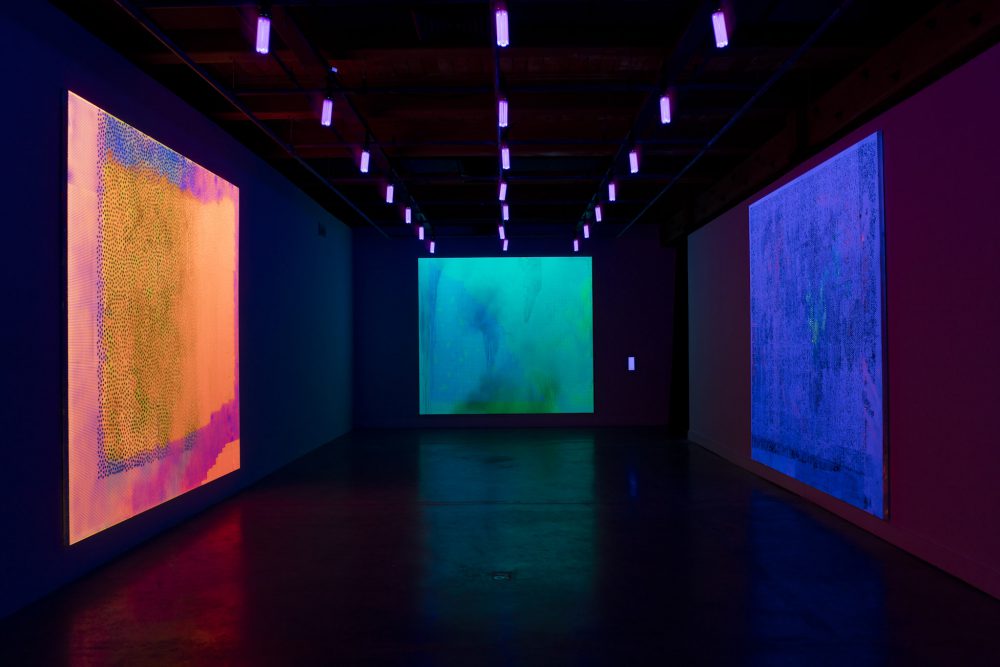Exhibition Pick: Jacqueline Humphries
Charlie Tatum visits Jacqueline Humphries’ solo show at the Contemporary Arts Center, which features two recent bodies of work.

Installation view of “Jacqueline Humphries” at the Contemporary Arts Center, New Orleans. Courtesy the artist and Greene Naftali, New York. Photo by Traviesa Studio.
Jacqueline Humphries
Contemporary Arts Center
900 Camp Street
November 19, 2015–February 28, 2016
In her recent paintings, on view at the Contemporary Arts Center, Jacqueline Humphries takes the language of Abstract Expressionism—smudges, drips, and splatters—and updates it for a generation that embraces the joys of kitsch and mechanical reproduction. In a group of paintings on the CAC’s first floor, grids of dots and carefully placed splotches sit among glowing fields of paint mixed with aluminum powder, giving the works the perceived weight and shine of metal. Though the works appear messy, each mark is carefully planned and placed.
An upstairs gallery is lit only by black lights, under which spills and dribbles of fluorescent paint glow neon blue, pink, and green. These paintings embrace their own artificiality and the gaudiness of synthetic materials. They are a little repulsive, but monumentally sexy. The vivid neon radiates life under the UV lights—like a go-go dancer’s jockstrap on Bourbon Street or a frat boy’s bed stains on MTV’s Room Raiders. Stenciled rows of coy emoticons :) :) :) :) :) appear in repetition :-/ :-/ :-/ :-/ :-/ as successful and failed sexts, the digital detritus of desire.
Tucked in the back of the second floor is a more demure work, an oversized facsimile of Robert Williams Wood’s How to Tell the Birds from the Flowers, smeared with the same fluorescent paint. Wood, the inventor of the technology behind black lights, wrote and illustrated the 1907 children’s book, a collection of satirical poems teaching the reader how to tell the difference between plants and animals:
The Parrot and the Carrot we may easily confound,
They’re very much alike in looks and similar in sound,
We recognized the Parrot by his clear articulation,
For Carrots are unable to engage in conversation.
Humphries, similarly, blurs this distinction between animate and not. Each of her works embodies its own mysterious presence, seemingly asking the question: Can a painting be alive?



